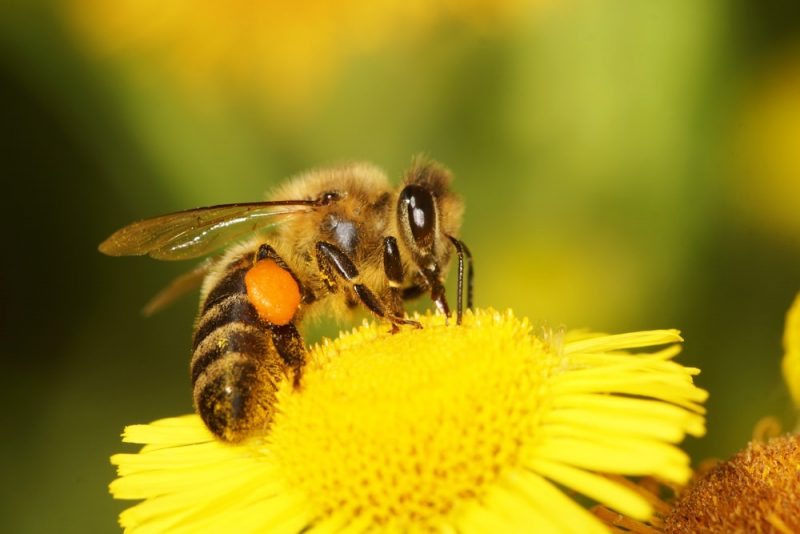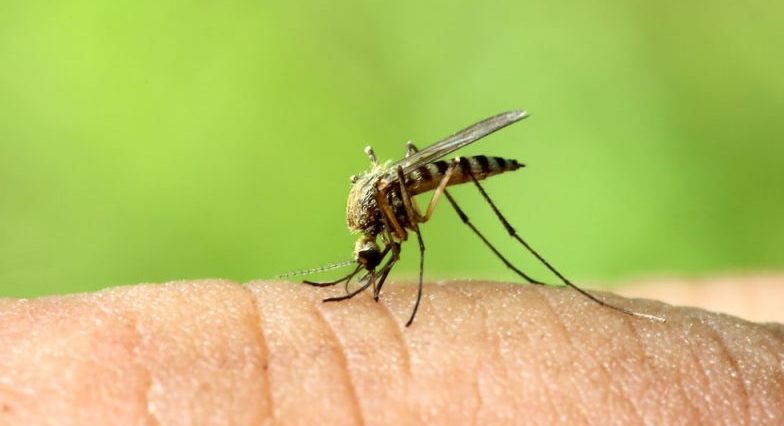It is possible to talk about useful animals and harmful animals when we think of them from a strictly human point of view, since in nature the notions of utility or harm do not apply: they all fulfill a certain function, often irreplaceable, within their specific ecosystem.
- Useful animals. They are those that can be used by man, either by incorporating them into human work (such as beasts of burden) or by benefiting from their natural activities and behaviors (such as the cultivation of bees to obtain honey). For instance: bees, chickens, cats.
- Harmful animals. They are those that represent a threat to the quality of human life, it may be because they transmit diseases, devour food before it can be harvested or parasitize man (like numerous insects). When it comes to large numbers of animals of this type, it can be spoken of a pest. For instance: mosquitoes, ticks, clothes moths.
Examples of useful animals

- Bees. These insects produce in colony numerous substances of benefit to man, both in the elaboration of other products and in their direct consumption: honey, wax, royal jelly. For that reason they are cultivated in the beekeeping industry. In addition, bees play the vital role of flower pollination together with other insects.
- Horses. These animals have accompanied man from very early ages, serving as a means of transport to move merchandise, people, pull carts, run in races, wage war and many other aspects. In return it has received a privileged place in our imagination and our culture, often as a sacred symbol.
- Cows. Among the most useful and beneficial animals for man are bovines: cows and bulls. They are not only used to obtain milk (and with it a whole range of dairy products) and meat and leather, but also to pull plows and thus initiate planting. The livestock industry deals with their breeding, crossing and use.
- Butterflies. Beyond that the beauty of their coloring has often fascinated man and their metamorphosis from caterpillar to winged has turned them into symbols of change and growth in our culture, butterflies fulfill the vital role of flower pollination, spreading the plant genetic material that will later fertilize trees and generate fruits, on which man can feed.
- Dogs. This domesticated species, a cousin of wild wolves, is one of the oldest cases of coexistence between humans and animals. This symbiosis provided the dog with food, shelter and affection, in exchange for security and companionship. Even today dogs fulfill this role as guardians and faithful companions of man.
- Sheep. Like cattle, sheep (sheep, goats, etc.) are ruminants domesticated by man and systematically raised and grazed, to take advantage of both their fur, from which wool is obtained for numerous textile applications, such as milk. and the meat that they feed man. Sheep grazing dates back to ancient times and is typical of European regions, from where it moved to the American continent during colonization.
- Mice, hamsters and guinea pigs. Unlike rats, which are an urban pest, mice, hamsters and guinea pigs are rodents widely bred in captivity to serve as pets (especially at an early age), or for scientific experimentation. White laboratory mice are the most common for testing drugs, developing treatments and vaccines, etc.
- Chickens. Another of the animals most raised by man in all latitudes, they offer man various forms of food, such as eggs, an integral part of practically all human diets, and chicken meat, also one of the most consumed worldwide. .
- Camels. In the desert regions the camel, as well as in the Andean regions the llama or alpaca, are animals of the camelid family that have been more or less domesticated by man and are used mainly as beasts of burden. This does not mean that their meats cannot be eaten, but the greatest benefit is derived from their physical resistance in the transport of people and merchandise.
- Cats. A recently domesticated animal species, compared to the dog and other species, so its predatory instincts are still very much in force. This explains its incorporation into European households in the Middle Ages as a hunter of mice and other harmful vermin, in exchange for food, affection and care. Today they are one of the most popular pets.
Examples of harmful animals

- Mosquitoes. The parasite insect par excellence, the mosquito, is one of the most frequent and most fought disease transmitters in the world. Diseases such as Dengue, Yellow Fever, Malaria, Zika virus, Chikungunya Fever and many more are transmitted exclusively through their bite. Its fast and versatile life cycle also takes advantage of any water pool and makes it a difficult pest to control.
- Lice and fleas. External parasites of man and domestic animals, are forms of blood-sucking insects, that is, they feed on blood, and often carry more or less serious diseases on the skin or in the organism of those they parasitize.
- Vegetable mites. These mites constitute one of the main pests of the vegetable and fruit cultivation, since they invade the leaves or the stems of the plants and proceed to dig tunnels and feed on the sap, reducing the vital capacity of the plants or sometimes devouring the leaves, the flowers or fruits and spoiling the harvest.
- Ticks. They differ from lice and fleas in that they are not insects, but arachnids – a form, if you will, of a mite. Ticks feed on blood and for this they usually attach to another animal and dig a small hole in its skin to ensure a constant blood flow as they grow. They can transmit many diseases, such as Lyme disease. A variant of these parasites are scabies mites, which dig tunnels in the skin of animals and humans.
- Rats. Adapted to life in big cities, these rodents can grow to a good size, devouring just about anything they find in city dumps and sewers. They can seep into homes and businesses and devour food and even textile warehouses, and also serve as a host and means of transport for fleas and other parasites that can be transmitted to man. Such was the case with the famous bubonic plague of medieval Europe.
- Cockroaches. One of the most adaptable and resistant insects known, the cockroach has managed to sneak into urban life, becoming a true contemporary pest. There are around 5000 species of this animal in the world, capable of transmitting diseases and endowed with a rapid and massive reproductive cycle. They are also extremely resistant animals, long-lived (almost a year old) and with a very adaptable diet.
- Flies. Another insect with a frenzy of reproduction and a massive presence on the planet are flies of various kinds. They usually feed on food scraps and waste, although there are also those that feed on blood. Flies can be a source of contamination in food and especially in open wounds, since there they lay their eggs and their larvae emerge to devour organic matter.
- Silverfish. Known as sardineta, silverfish or trace, it is an insect that feeds on plant substances such as paper and cardboard, or on vegetable flours and starches. It is rare to see them during the day as they flee from the light, but they can plague books and clothes, in closets and storage rooms. Its name comes from its characteristic metallic color.
- Caterpillars. Caterpillars are a stage in the life cycle of butterflies and moths, which in some cases can proliferate uncontrollably and become a pest for plants, massively devouring their leaves and thin stems and weakening them and preventing the appearance of fruits. This can generate considerable economic damage to crops.
- Clothes moths. It is a type of small moth that lives in closets and dark warehouses of clothing or textile factories, as it feeds on the fibers that make up clothing, opening holes in the garments. They are usually repelled by naphthalene.
